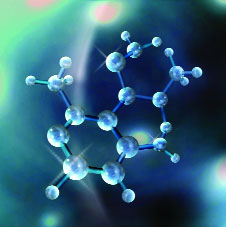Nanotechnology, which has seen great advances in recent times, proliferating deeper into our lives in amazing ways, also has potential dangers. It’s time to raise awareness
According to the latest research study, ‘Global Nanotechnology market outlook of 2024’, the nanotechnology industry is predicted to grow at a rate of 17 per cent during the forecasted period and is expected to exceed $125 billion by 2024. These huge market expectations are because of the wide proliferation of this technology in almost all sectors of the global economy, including health, energy, cosmetics, electronics, transport, agriculture among others.
However, this window of opportunity must be dealt with caution. Matters at nano-scale exhibit properties different from the bulk matter primarily because of the surface and quantum effects. These factors affect the chemical reactivity of materials and alter their mechanical, electrical and magnetic properties. Hence, the success of nanotechnology relies heavily on the ability of the researchers to address these uncertainties. They must become adept in understanding the prospects and implications that this new technology may leave on the eco-system as a whole.
Nanoparticles are sources of both natural and man-made processes — soil erosion, dust storms, burning of unprocessed fuel, industrial and other mechanical processes — release several million tonnes of nanoparticles in the air. Where studies have extensively researched the health impacts of PM2.5 and PM10 exposure, evidence on the toxic effects of nanoparticles on human health is insufficient and beyond the scope of a single discipline. This calls for an interdisciplinary research team of scientists, health professionals, and epidemiological researcher who can be convinced of the scientific composition, transmission and exclusive effects of nanoparticles on human health.
The large surface area and chemically reactive nature of nanoparticles make risk assessment highly uncertain. Inhalation is the most common route through which people get exposed to nanoparticles. Ingestions and dermal contact of engineered nanoparticles are also popular transmission mechanisms. Inhaled particles can enter the blood circulation from where it can be carried to different health organs, such as heart, kidney and liver, giving rise to cardiovascular, pulmonary diseases and respiratory illnesses. Suggestive evidence show that nanoparticles accumulated in the vascular sites can clot the blood vessels, thereby increasing the likelihood of a heart attack or a stroke. Occupational exposure to these toxic elements can increase the risk of lung cancer and long-term exposure to higher concentrations of nanoparticles can lead to deaths. For patients with preexisting heart or pulmonary conditions, the situation can get worse when exposed to elevated particle concentrations. Infant mortality, neonatal complications and birth defects are also likely to increase with ever increasing concentrations of matters smaller than 10 µm.
Nanotechnology use in the cosmetic industry is not unknown. But there is no public knowledge about the amount and extent of use of nanotechnology in cosmetics, nor do we know of all the daily consumable food products that contain nanoparticles. Hence, it is difficult to quantify the damage caused through them. What we do know with certainty is their ability to penetrate deeper into the human skin as also their ability to accumulate and persist into human biological systems for long.
Other than human health, nanoparticles are likely to alter the environmental processes, especially through their effect on dust cloud formation. Particulate matters from unprocessed fuel and burning of biomass create dust clouds which can be transported along thousands of kilometres.
Therefore, major environmental events happening in one part of the country can affect other far-away regions. Atmospheric clouds leading to lower intensity of sunlight can change the pattern of rainfall and duration of monsoon. This changing pattern can have consequences on agricultural productivity and reduce the production of staple food crops. Furthermore, the toxicity of these particles is responsible for depleting the ozone layer, allowing higher intensity of ultraviolet rays to reach the Earth’s surface.
Given that the dangers of nanoparticles are impossible to calculate in the absence of further research, it is essential to be aware of the risks involved and to undertake the necessary steps to minimise their threat. Towards this end, the Government of India had laid out some initiatives, importantly the Nano Science Mission anchoring the promotion of nanoscience in India. The mission is working towards strengthening knowledge on nanotechnology through national and international collaborations. Significant steps are underway to include nanoscience in the curriculum for postgraduate students. A comprehensive document, as the first of its kind, is brought forward by the Nano regulatory Task Force on precautionary measures in handling practices of nanoparticles.
But the regulatory needs of such an upcoming new technology will have to be spread further to have sector based regulations. Sectors of production should be able to separate particles used in macro versus nanoforms. Materials used in nano forms should have regulatory mechanisms different from their bulk properties. This initiative can then be furthered with mandatory reporting of nanoparticles in the finished products. As said before, people are not aware if their consumable products have nanoparticles. Once they are aware, they will be able to take appropriate measures limiting their exposure. Routine regulations of nanotechnology will only work better if we understand the different sources of nanoparticles, the varying levels of concentration by sources, their channels of transmission into living beings, and finally the causal relationships of nanoparticles affecting human health.
(The writer is Associate Fellow, National Council of Applied Economic Research. Views expressed here are personal)


























